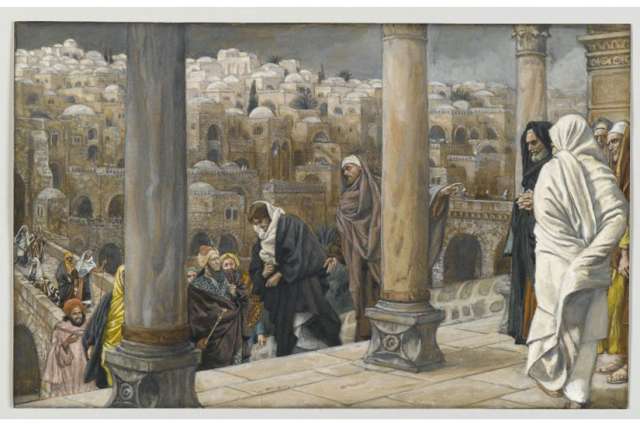We meet a group of gentiles, non-Jews, who seek Jesus out for the first time. They do not come simply to catch a glimpse of Him, to have some general audience with Him, but rather to “see” Him. In John’s Gospel, “seeing” Jesus is believing in Him. How simple yet how stunning a request: “Sir, we would like to see Jesus” (John 12:21)!
Throughout the entire Scriptures, men and women have longed to see God, to gaze upon God’s countenance, beauty and glory. How many times in the psalms do we ask to see the face of God? “Shine your face on your servant” (Psalm 119:135). Not only do we beg to see God’s face, but we are told to look for it. “Seek my face,” says the Lord (Psalm 27:8). But we cannot seem to find the face we are told to look for. Then the laments begin: “Do not hide your face from me” (Psalm 102:2). “Why do you hide your face from me?” (Psalm 88:14). “How long will you hide your face from me?” (Psalm 13:2). We beg, we seek, but we cannot find God’s face. Then we are distraught. Moses, speaking as friend-to-friend, asked to see God’s face. But God said to him, “You cannot see my face; for no one shall see my face and live” (Exodus 33:20).
When we ask in the Psalms to see God’s face, we are really asking to see God as God truly is, to gaze into the depths of God. In the last chapter of the last book of the Scriptures, it is written: “They will see His face” (Revelation 22:4). We see God’s face revealed to us in the person of Jesus of Nazareth. How often do we long to “see” the face of Jesus? Where are we seeking His face today? What do we do when we finally “see” the face of Jesus? And do we ever stop to realize that God gazes upon us even in our smallness, meanness and sinfulness and calls us to follow His Son?
In his first major interviews with Jesuit publications in September 2013, Pope Francis described himself as standing under the gaze of Christ.
“I am a sinner whom the Lord has looked upon.”
He illustrated Christ’s gaze by referring to Caravaggio’s The Calling of St. Matthew, one of his favourite paintings housed in the Roman Church of San Luigi dei Francesi in Rome.
In his address to the International Federation of Catholic Medical Associations on Sept. 20, 2013, in condemning abortion, Pope Francis appealed directly to the face of Christ.
“Each one of us is invited to recognize in the fragile human being the face of the Lord, who, in His human flesh, experienced the indifference and loneliness to which we often condemn the poorest… Each child who is unborn, but is unjustly condemned to be aborted, bears the face of Jesus Christ, bears the face of the Lord, who, even before He was born, and then as soon as He was born, experienced the rejection of the world.”
In condemning euthanasia, he again pointed to the face of Christ present in the elderly targeted for elimination.
“Each old person, even if infirm or at the end of his or her days, bears the face of Christ. They cannot be discarded.”
On the feast of St. Matthew the evangelist in 2013, Francis said: “Matthew feels in his heart the gaze of the Lord who looked upon him... It changed his life. We say he was converted. In the case of St. Peter, Christ’s glance leads to remorse and repentance. So did Peter change, who, after denying his Lord then met His gaze and wept bitterly.”
Pope Francis’ gestures and simple words flow from his episcopal and now papal motto: “miserando atque eligendo.”
Jesus’ gaze of merciful tenderness (miserando) shows this patience of God which is His response to human weakness.
Taken from St. Bede’s commentary on the call of Matthew, the words express Jesus’ whole approach to people — having mercy on others and inviting them (eligendo) to follow Him.
These are the bare essentials of the Christian faith. Everything flows from the transforming light of Christ’s face. Pope Francis’ motto is our motto: the Lord, having looked upon each of us, calls us, in spite of us and because of us.
(Fr. Rosica, CSB, is CEO of Salt and Light Catholic Media Foundation and English language assistant, Holy See Press Office. For more of Fr. Rosica, visit saltandlighttv.org/rosicareflections.)


